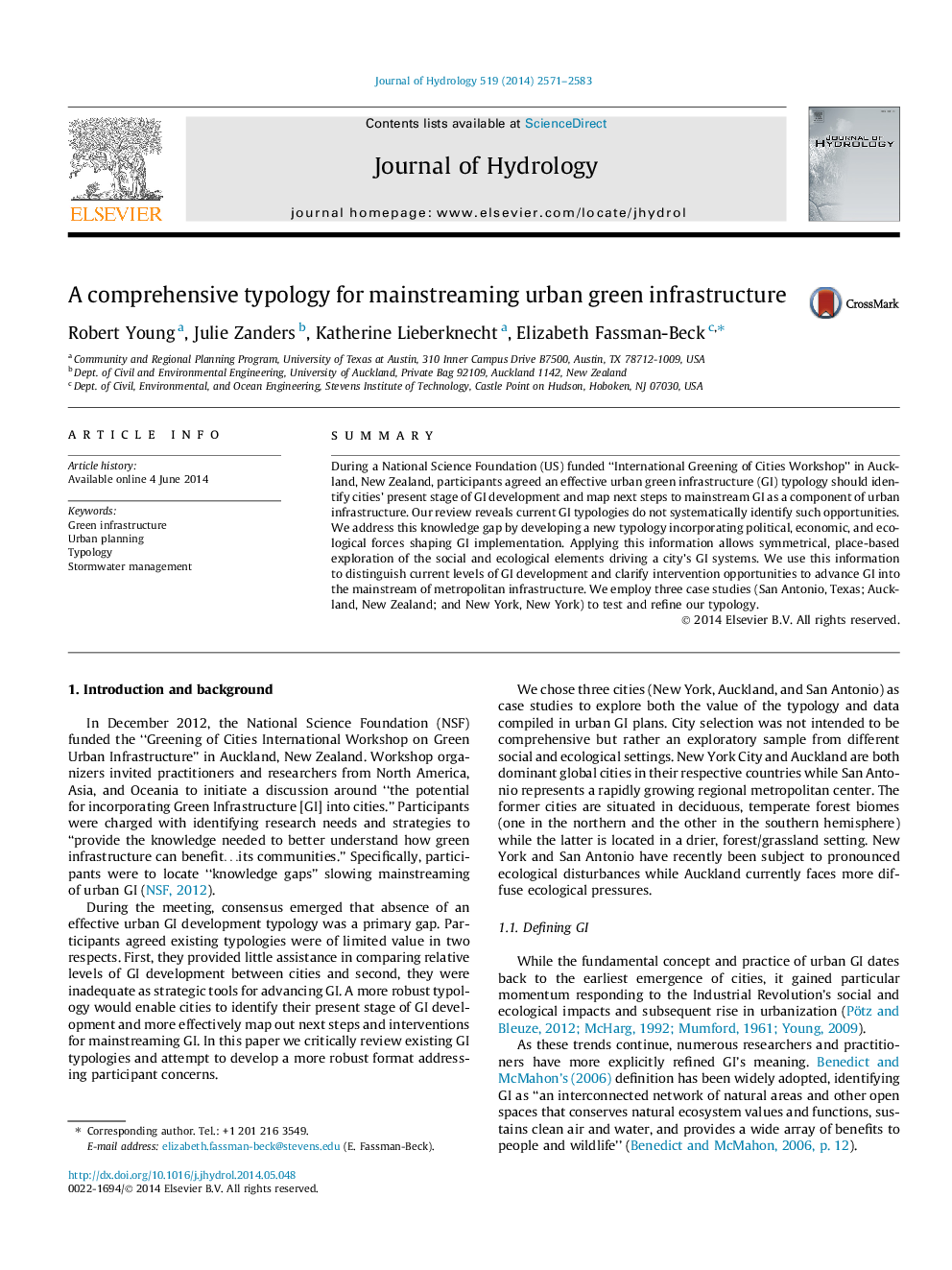| Article ID | Journal | Published Year | Pages | File Type |
|---|---|---|---|---|
| 6412631 | Journal of Hydrology | 2014 | 13 Pages |
â¢We derive an urban green infrastructure typology from a nexus of social and ecological forces.â¢Place-based ecology, political power and economic elements underpin planning to mainstream GI.â¢A city's GI development trajectory is described as general, unequal, contradictory, or in-crisis.â¢Applying the typology to NYC, San Antonio, and Auckland reveals city-scale planning opportunities.â¢The typology can be used to leverage vulnerabilities and opportunities within individual cities.
SummaryDuring a National Science Foundation (US) funded “International Greening of Cities Workshop” in Auckland, New Zealand, participants agreed an effective urban green infrastructure (GI) typology should identify cities' present stage of GI development and map next steps to mainstream GI as a component of urban infrastructure. Our review reveals current GI typologies do not systematically identify such opportunities. We address this knowledge gap by developing a new typology incorporating political, economic, and ecological forces shaping GI implementation. Applying this information allows symmetrical, place-based exploration of the social and ecological elements driving a city's GI systems. We use this information to distinguish current levels of GI development and clarify intervention opportunities to advance GI into the mainstream of metropolitan infrastructure. We employ three case studies (San Antonio, Texas; Auckland, New Zealand; and New York, New York) to test and refine our typology.
